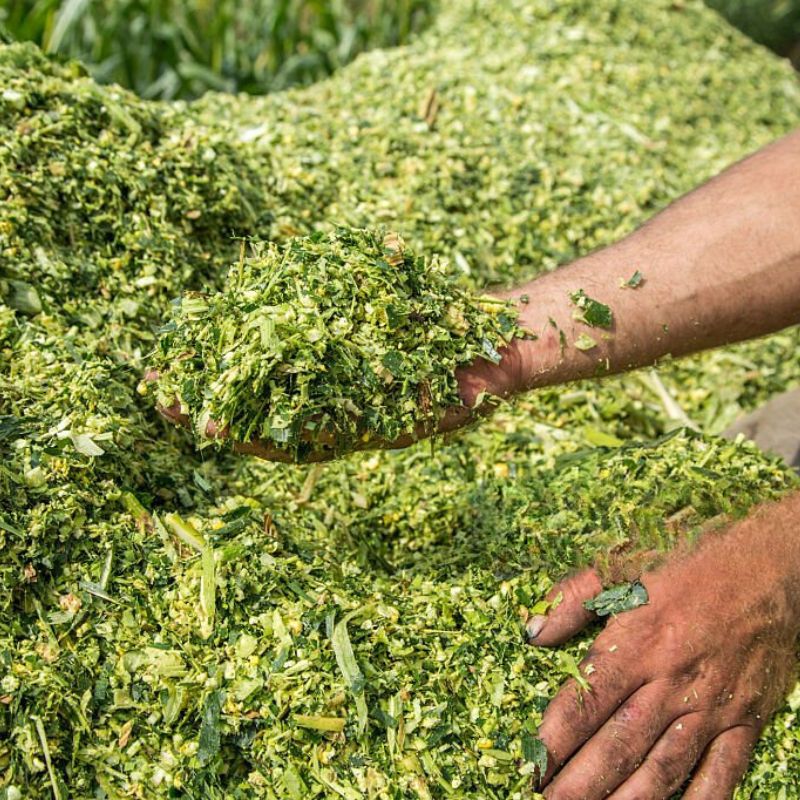
Silage is the product of controlled crop fermentation under anaerobic conditions known as ensilage often stored in silos. Microorganisms or additives drive fermentation, converting carbohydrates to lactic acid, inhibiting clostridial activity. Essential requirements include air exclusion and discouraging clostridial fermentation. Silages typically have higher moisture levels (around 650 g/kg) compared to hay, ensuring proper preservation and nutritional quality.

There are several ways in which the clostridial type fermentation can be checked. One of the commonly used practices is to increase the dry matter of the herbage. In ensiled crops containing 30 per cent or more dry matter, crop ensile satisfactorily. Promotion of lactic acid fermentation is important pathway for controlling clostridial growth. Other method of controlling fermentation is by addition of preservatives and additives. Carbohydrates in the forages may be naturally occurring or may be added as a separate ingredient such as molasses obtained as sugar industry byproducts, which acts as a fermentable substrate.
Various types of additives can be used to improve or inhibit the fermentation or supplement nutrients needed by ruminants to be fed as silage. Propionic acid, formaldehyde, etc. have been used to increase the rate of lactic acid fermentation and produce stable silage. Carbohydrate sources such as molasses, whey, yeast and other energy-rich ingredients have also been used as additives to increase the fermentation and feeding value of silage. Urea @ 0.5-1.0 per cent have been found to increase crude protein content and the lactic acid content of silage made from cereal fodders.
As anaerobic conditions are achieved in silo, the species of Escherichia, Bacillus, Clostridium, Leuconostoc, Lactobacillus and Pediococcus develop. Lactic acid bacteria (Streptococcus, Leuconostoc, Lactobacillus and Pediococcus) are the important organisms for preservation of silage of good quality
Silos : The different types of silos generally used are: (i) pit silo (ii) tower silo (iii) trench cum bunker (iv) trenches and (v) drum and PVC silo. The silo must provide a solid surface to permit consolidation of the ensiled material and elimination of air. It must protect the silage from water. In India, pit silo is the most common.